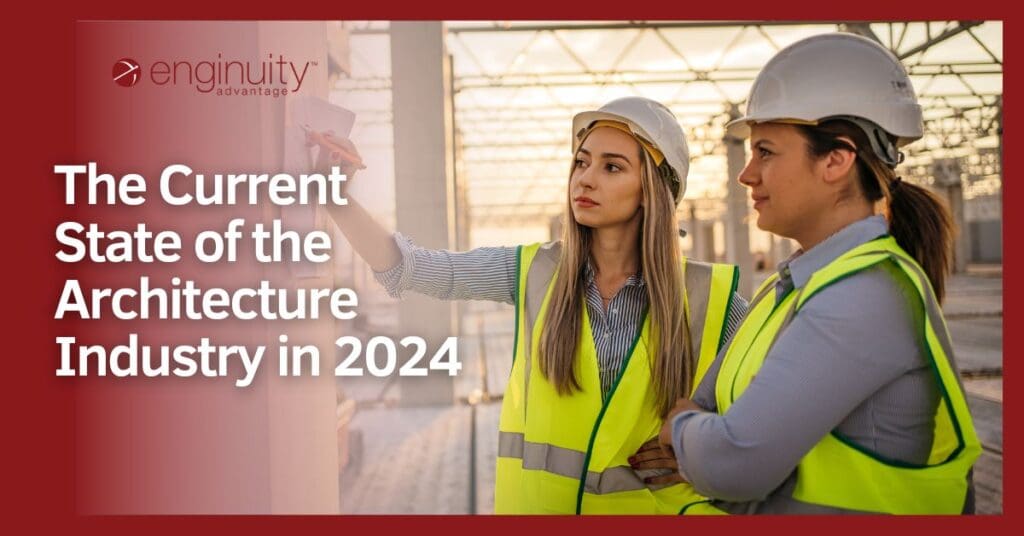The Current State of the Architecture Industry in 2024 for Architectural Engineers

Navigating Growth, Technological Innovation, and Sustainability in a Dynamic Landscape
The architecture industry is experiencing a period of dynamic growth and transformation, driven by technological advancements, sustainability imperatives, and evolving societal needs. For architectural engineers, understanding these trends is crucial for navigating the current landscape and capitalizing on emerging opportunities. This blog provides a high-level overview of the current state of the architecture industry in 2024, focusing on key trends, market growth, and challenges relevant to architectural engineers.
Projected Employment Growth
According to the U.S. Bureau of Labor Statistics (BLS), employment in architecture and engineering occupations is projected to grow faster than average from 2022 to 2032. Specifically, the BLS predicts an 8% increase in civil engineering employment from 2020 to 2030, which includes architectural engineers. This growth is driven by the need to improve existing structures and repair aging infrastructure, emphasizing the crucial role of architectural engineers in the future of construction and urban development.
AEC Market Size and Growth
The global architectural, engineering, and construction (AEC) market was valued at approximately USD 10.05 billion in 2023. It is projected to grow at a compound annual growth rate (CAGR) of 10.3% from 2024 to 2032, reaching about USD 24.36 billion by the end of the forecast period. This substantial growth is primarily driven by:
- Advancements in BIM Software: Building Information Modeling (BIM) software has revolutionized the way architectural engineers design and manage construction projects. The increasing adoption of BIM is enhancing project efficiency, collaboration, and accuracy.
- Complexity of Construction Projects: As construction projects become more complex, the demand for skilled architectural engineers who can manage intricate designs and integrate advanced technologies is rising.
- Expanding Construction Sectors: The construction sectors across various regions are expanding, fueled by urbanization, infrastructure development, and population growth.
Embracing Sustainable and Eco-Friendly Designs
Sustainability is a major focus in the architecture industry. Architectural engineers are at the forefront of designing eco-friendly buildings that minimize environmental impact. This includes using sustainable materials, incorporating energy-efficient systems, and implementing green building practices. The rising demand for sustainable construction is driving innovation in materials science and building technologies, creating new opportunities for architectural engineers.
Integration of Smart Technologies
The integration of smart technologies is transforming the built environment. Architectural engineers are leveraging IoT devices, advanced sensors, and automation systems to create intelligent buildings that enhance energy management, security, and occupant comfort. These smart buildings adapt to the needs of their users, optimizing resource use and improving overall efficiency.
Focus on Resilient Infrastructure
In light of increasing natural disasters and climate-related challenges, resilient infrastructure has become a critical priority. Architectural engineers are incorporating features that enhance the durability and adaptability of structures, such as flood-resistant materials, seismic retrofitting, and modular construction techniques. These strategies ensure that buildings can withstand and recover from adverse conditions, protecting both occupants and investments.
Challenges Facing the Industry
Despite the positive growth trends, the architecture industry faces several challenges:
- Economic Fluctuations: Economic uncertainties can impact project funding and timelines, requiring architectural engineers to be adaptable and resilient.
- High Initial Investments: The need for high initial investments in new technologies and sustainable practices can be a barrier for some firms.
- Technological Integration: Keeping pace with rapid technological advancements requires continuous professional development and investment in new tools and systems.
Opportunities for Innovation and Collaboration
The current state of the architecture industry presents numerous opportunities for innovation and growth. Architectural engineers can:
- Leverage Emerging Technologies: Embrace advancements in digital design tools, such as BIM and 3D printing, to create cutting-edge designs and streamline project workflows.
- Collaborate Across Disciplines: Work closely with professionals in engineering, urban planning, and environmental science to develop holistic solutions for complex challenges.
- Focus on Sustainability: Lead the way in designing sustainable buildings and infrastructure that address environmental concerns and meet regulatory standards.
Conclusion
The architecture industry in 2024 is characterized by significant growth, technological advancements, and a strong focus on sustainability and resilience. For architectural engineers, understanding these trends is essential for staying competitive and driving innovation. By embracing new technologies, prioritizing sustainable practices, and navigating industry challenges, architectural engineers can play a pivotal role in shaping the future of the built environment.
Unlock Dream Careers & Elite Talent: Just One Click Away!


